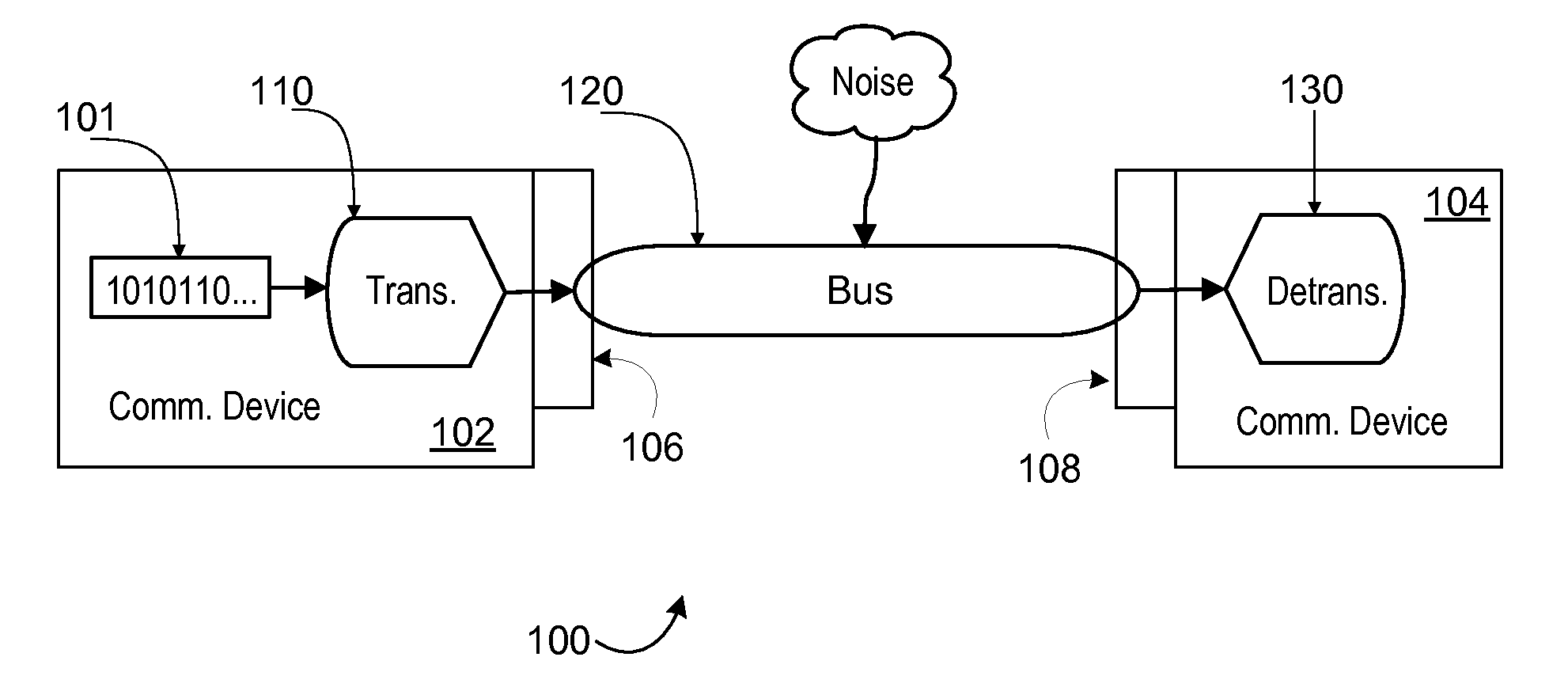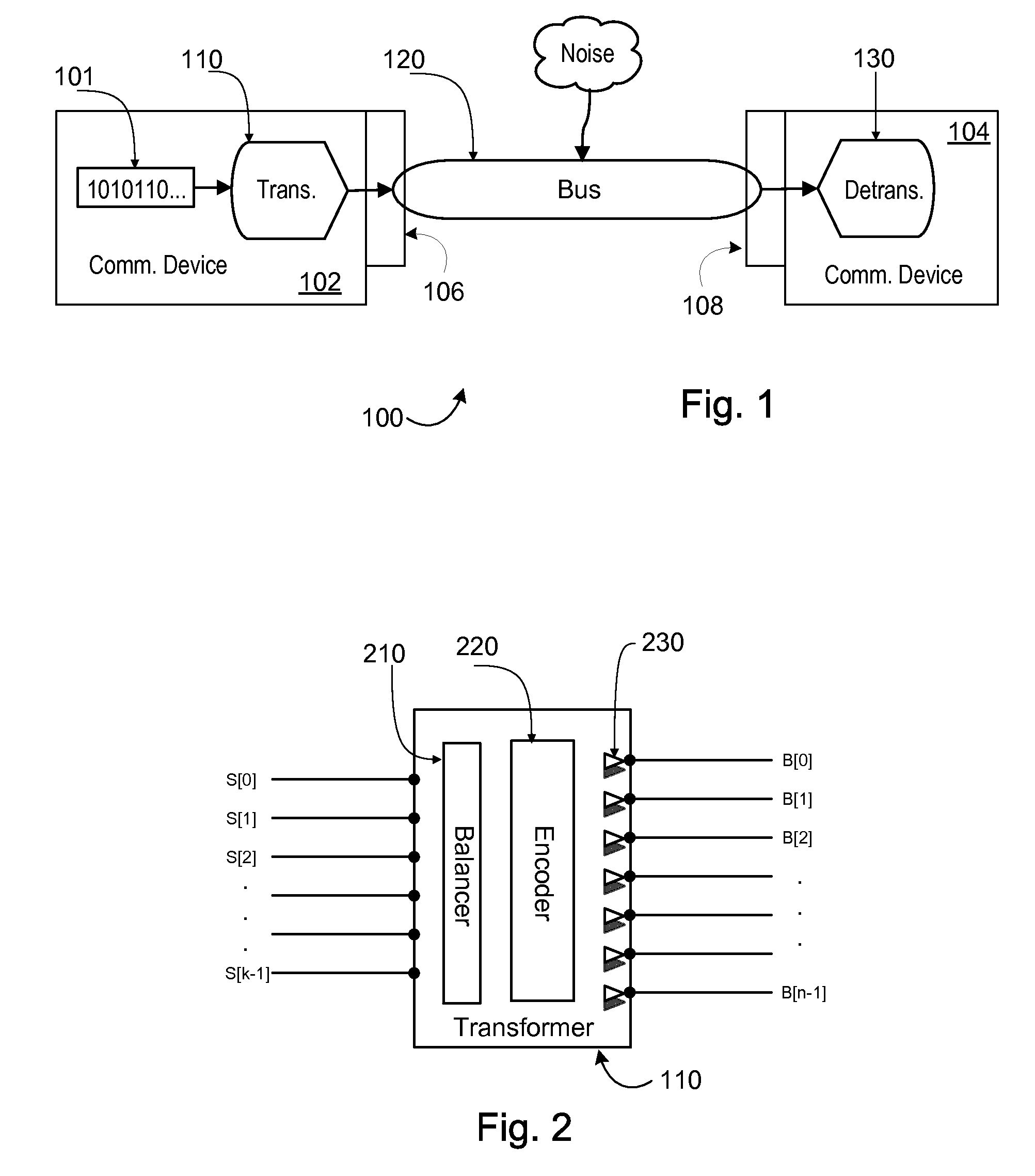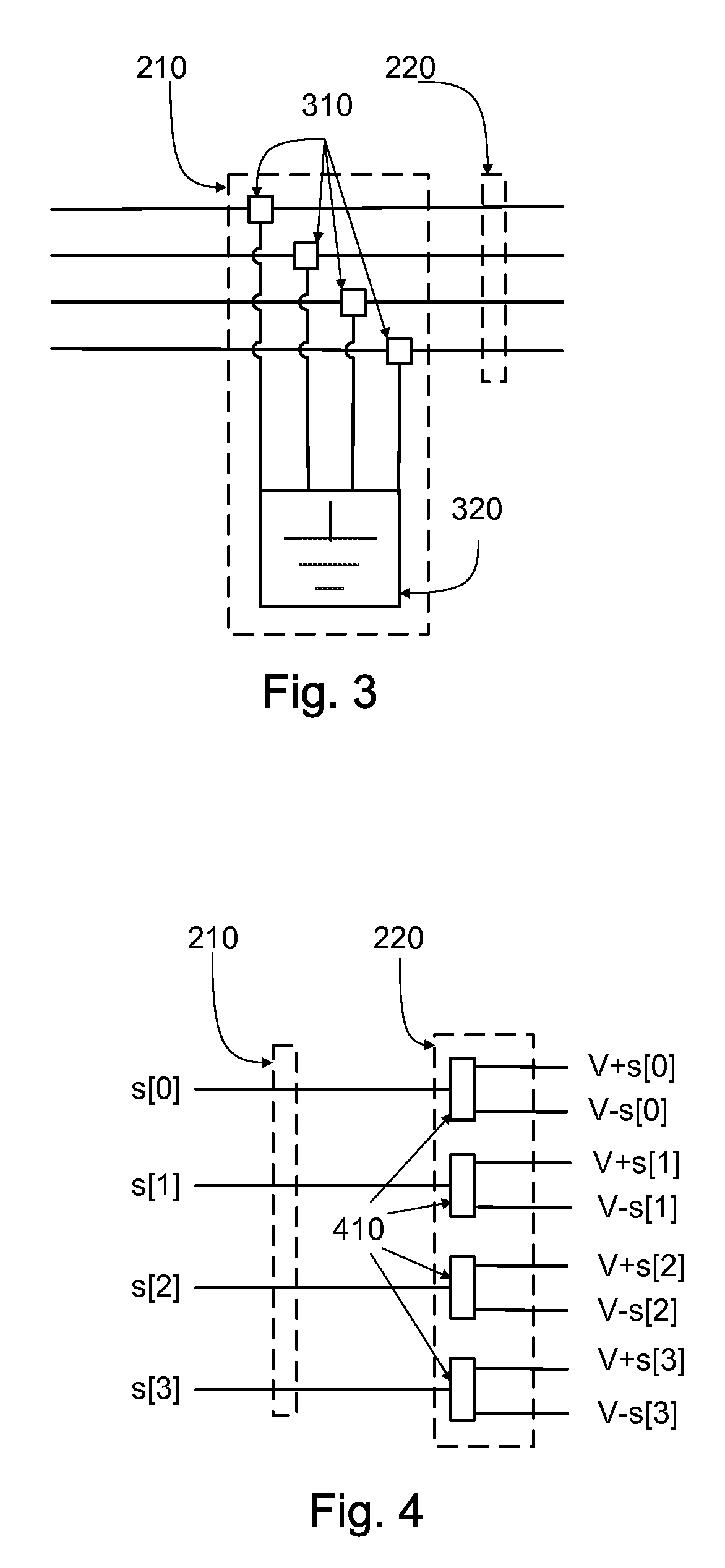Orthogonal differential vector signaling
a vector signal and orthogonal technology, applied in the field of communication, can solve the problems of single-ended inputs being susceptible to noise, not always possible to have a common electrical reference on both sides of the wires, and significant errors when using single-ended inputs, so as to improve the resistance to bus noise and resist reference noise
- Summary
- Abstract
- Description
- Claims
- Application Information
AI Technical Summary
Benefits of technology
Problems solved by technology
Method used
Image
Examples
example steps
[0126]For clarity, FIG. 18 depicts example steps that may be performed in accordance with at least one embodiment of the invention. At step 1802, an unbalanced signal set may be received. For example, the unbalanced signal set may be received by the transformer 110 (FIG. 1). At step 1804, a balancing transformation may be applied. For example, the balancer 210 (FIG. 2) may apply the balancing transformation to the unbalanced signal set received at step 1802 as at least a part of a process of forming a balanced signal set. At step 1806, a balanced signal set may be provided. For example, the balancer 210 may provide the balanced signal set formed at least in part at step 1804 to the encoder 220. The steps 1802, 1804 and 1806 are enclosed in a dash line 1808 to indicate that they may be part of a set of signal balancing steps 1808.
[0127]At step 1810, an input signal set may be received. For example, the encoder 220 (FIG. 2) may receive the input signal set. At step 1812, a non-simple ...
PUM
 Login to View More
Login to View More Abstract
Description
Claims
Application Information
 Login to View More
Login to View More - R&D
- Intellectual Property
- Life Sciences
- Materials
- Tech Scout
- Unparalleled Data Quality
- Higher Quality Content
- 60% Fewer Hallucinations
Browse by: Latest US Patents, China's latest patents, Technical Efficacy Thesaurus, Application Domain, Technology Topic, Popular Technical Reports.
© 2025 PatSnap. All rights reserved.Legal|Privacy policy|Modern Slavery Act Transparency Statement|Sitemap|About US| Contact US: help@patsnap.com



